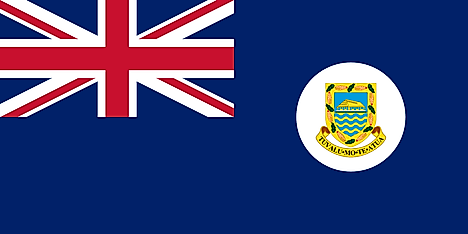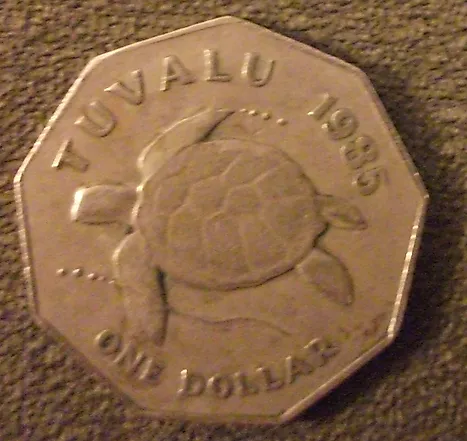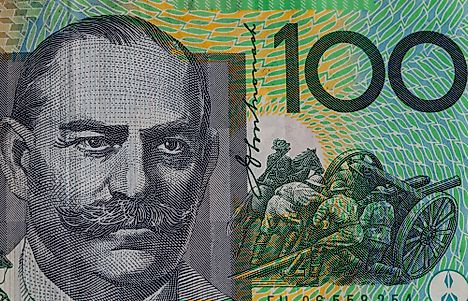Flags, Symbols & Currency of Tuvalu
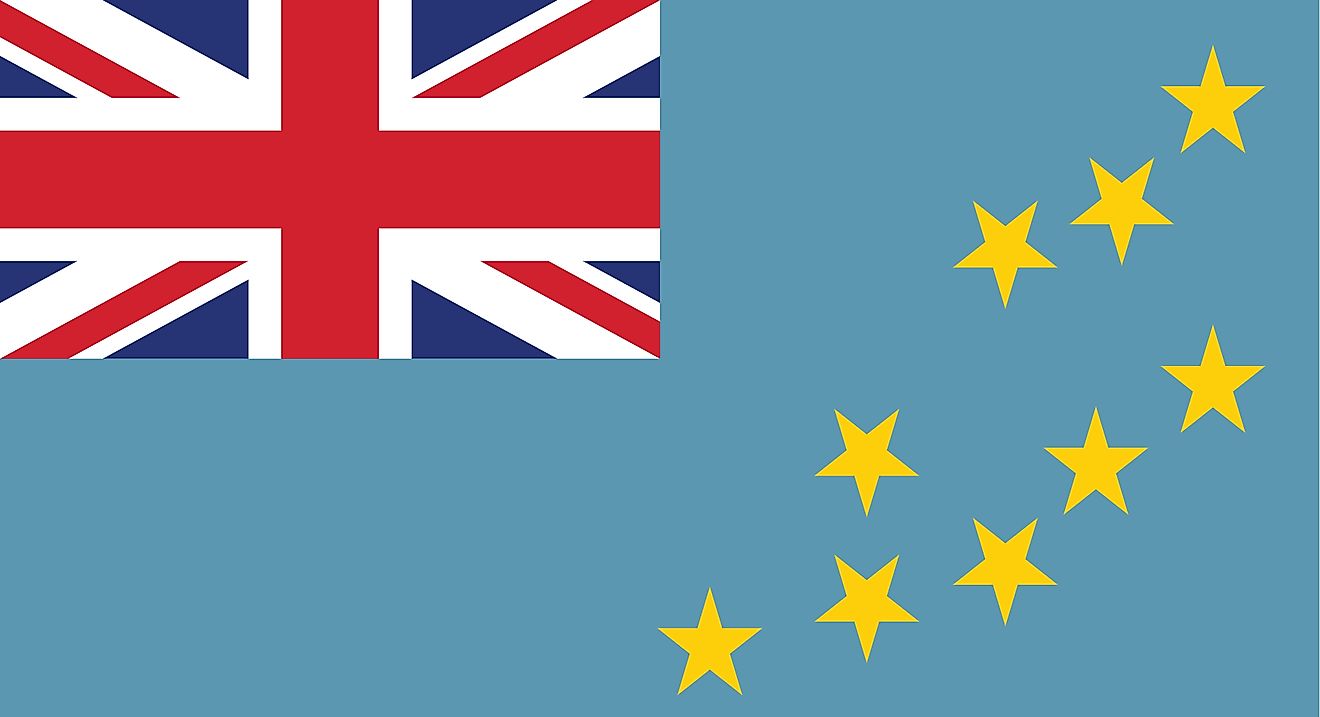
The flag of Tuvalu is a Light Blue Ensign. Towards the fly side of the flag, the map of the island is represented by nine five-pointed stars. The stars are yellow in color. The stars represent the nine islands of the country that are arranged on the flag in a geographically correct manner.
History of the Flag
The national flag of Tuvalu was officially adopted after the country gained independence from British rule in 1978. The design was based on the Union Flag of the British which is displayed on the upper left canton of Tuvalu’s flag. The background color is, however, a sky blue instead of the conventional blue of the Blue Ensign. Although the flag initially had nine stars, one of them was removed in October 1995. This was done to conform with the name of the country which means ‘eight together’ referring to the eight inhabited islands of the country. However, the people of the country protested against the removal of one of the stars. They believed it was a threat to the reigning monarchy of the country which was quite popular among the people of Tuvalu. Hence, the old flag with the nine stars was re-adopted in 1997. Today, the ninth island is no longer uninhabited as the growing population has led to people settling down on it.
Symbols of Tuvalu
Coat of Arms of Tuvalu
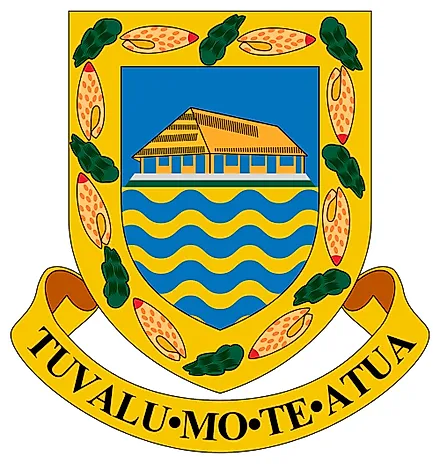
The coat of arms of Tuvalu features a shield with a thick golden border ornamented with 8 banana leaves and 8 mitre shells. Designed on the shield is a maneapa or indigenous meeting house resting on green grounds with blue sky above and ocean waves in blue and gold below. Below the shield is a banner bearing the national motto "Tuvalu mo te Atua" which is also the title of the country's national anthem.
National Anthem
- Anthem Title: Tuvalu mo te Atua (Tuvalu for the Almighty)
- Composer: Afaese Manoa
- Lyricist: Afaese Manoa
- Date of Adoption: 1978
The National Anthem of Tuvalu is named Tuvalu mo te Atua in Tuvaluan which translates to Tuvalu for the Almighty in English. It was adopted in 1978 when the country became independent. Afaese Manoa is both the lyricist and music composer of this anthem.
Tuvalu mo te Atua (Tuvaluan)
Tuvalu mo te Atua,
Ko te Fakavae sili,
Ko te ala foki tena,
Mo te manuia katoa
Loto lasi o fai,
Tou malo saoloto
Fusi ake katoa
Ki te loto alofa
Kae amo fakatasi
Ate atu fenua.
“Tuvalu mo te Atua”
Ki te se gata mai!
Tuku atu tau pulega
Ki te pule mai luga,
Kilo tonu ki ou mua
Me ko ia e tautai.
“Pule tasi mo ia”
Ki te se gata mai,
Ko tena mana
Ko tou malosi tena.
Pati lima kae kalaga
Ulufonu ki te tupu.
“Tuvalu ko tu saoloto”
Ki te se gata mai!
Tuvalu for the Almighty
Tuvalu for the Almighty
Are the words we hold most dear
For as people or as leaders
Of Tuvalu we all share
In the knowledge that God
Ever rules in heav’n above,
And that we in this land
Are united in His love.
We build on a sure foundation
When we trust in God’s great law
“Tuvalu for the Almighty”
Be our song for evermore!
Let us trust our lives henceforward
To the King to whom we pray,
With our eyes fixed firmly on Him
He is showing us the way.
“May we reign with Him in glory”
Be our song for evermore,
for His almighty power
Is our strength from shore to shore.
Shout aloud in jubilation
To the King whom we adore.
“Tuvalu free and united”
Be our song for evermore!
The Currency of Tuvalu is the Tuvaluan dollar
The currency of Tuvalu is known as the Tuvaluan Dollar. However, the Tuvaluan Dollar is not an independent currency. The Australian Dollar has been the official currency of Tuvalu since 1966. The Tuvaluan Dollar is just a variation of the Australian Dollar and uses the currency code of TVD.
Unlike most other sovereign nations of the world, Tuvalu lacks a central bank or central monetary institution. The country, however, has the National Bank of Tuvalu that serves the government of the country. Accounts of important government institutions and foreign assets are held by this bank.
Coins Of Tuvalu
Tuvalu’s first coins were launched following the stated independence of the country from colonial rule in 1976. The coins of seven different denominations, 1, 2, 5,10, 20, 50, and 1-dollar were initially introduced. These coins were designed by John Donald. Their design was based on an aquatic theme with all coins except the 1-cent coin exhibiting a marine creature native to the area. Although most of these coins were a copy of the Australian coins of the same denominations in terms of weight, size, and chemical composition, two of the coins were different. The 50-cent piece of the Tuvalu coin possesses a round shape while the Australian coin of the same denomination is dodecagonal. Also, the 1-dollar coin of Tuvalu was unique at its time as Australia and several other countries had not yet started to produce coins of such larger denominations. The 1-dollar Tuvaluan coin had nine sides representing the nine atolls and islands of the country. Currently, not all of the initial coin denominations are in use in Tuvalu. The 1-cent and 2-cent coins have been withdrawn from circulation since 1991.
Banknotes Of Tuvalu
Tuvalu uses the Australian Dollar for its banknotes. The Australian banknotes have been used in the country both before and after independence. Although the one dollar banknote was initially introduced in Tuvalu, it was later withdrawn to encourage the people to instead use the coin of the same denomination.
Historical Currencies Of Tuvalu
The concept of currency was introduced in Tuvalu by the Europeans who first reached Tuvalu in the 16th century. The Pound Sterling was initially used in the country prior to the introduction of the Australian dollar. For a period during the Second World War when the US occupied the islands, the use of the US dollar became popular in Tuvalu. Other currencies that have been used on the islands of Tuvalu include the Oceania pound and the banknotes of the Gilbert and Ellice Islands backed by the Yen and Pounds, respectively.
